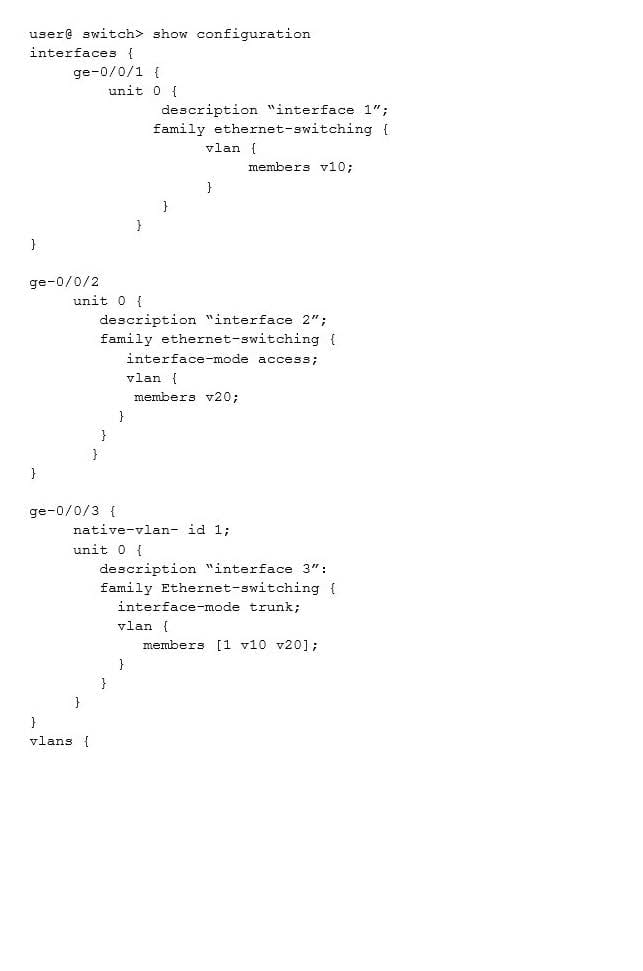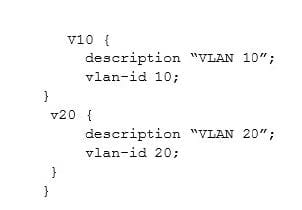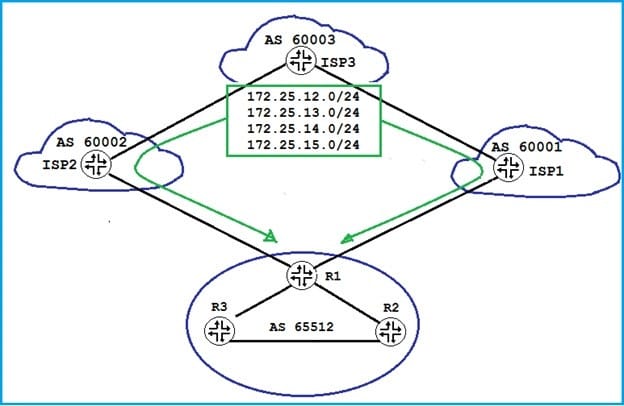JN0-647 Online Practice Questions and Answers
Your network supports multicast traffic but your provider network does not. You want to allow multicast hosts outside of your network to receive multicast traffic sourced within your network.
How would you satisfy this requirement?
A. Use MSDP peering with your provider.
B. Use AutoVPN to connect to the remote hosts.
C. Use an MP-BGP session to your provider to pass multicast traffic.
D. Use an automatic multicast tunnel gateway at the edge of your network.
Click the Exhibit button.


Referring to the exhibit which two statements are true? (Choose two.)
A. Untagged control packets entering interface ge-0/0/1 are not recognized.
B. Untagged data packets entering interface ge-0/0/2 will be tagged with VLAN ID 20.
C. Untagged control packets entering interface ge-0/0/3 are passed without a VLAN tag.
D. Untagged data packets entering interface ge-0/0/3 will be tagged with VLAN ID 1.
Click the Exhibit button.

Referring to the exhibit, you have EBGP peerings with both ISP1 and ISP2. You are receiving the 172.25.12.0/24, 172.25.13.0/24, 172.25.14.0/24, and 172.25.15.0/24 routes through both neighbors. You must ensure that traffic to these prefixes are load balanced through both service providers. You have configured a load-balancing policy and have applied it to the forwarding table, but the prefixes are not being load balanced.
What is required to accomplish this task?
A. The multihop feature should be enabled between both neighbors.
B. The multipath multiple-as feature should be used between both neighbors.
C. The as-override feature should be used between both neighbors.
D. The include-mp-next-hop feature should be used between both neighbors.
Which protocol is used for port-level access control and authentication?
A. MD5
B. IPsec
C. 802.1X
D. AES
You created a firewall rule to protect the Routing Engine. After applying the rule, your OSPF adjacencies dropped.
How would you solve this problem?
A. Create a firewall term that allows IP protocol 89.
B. Define a router ID under the [edit routing-options] hierarchy.
C. Configure the loopback interface under the [edit protocols ospf] hierarchy.
D. Apply the firewall filter to the physical ports.
You want to deploy MSTP with multiple regions. Each region should have a unique root bridge to accommodate a set of VLANs. Which three configuration elements must watch on switches participating in this deployment scenario? (Choose three.)
A. MSTI toVLAN mapping
B. revision level
C. CST BPDU parameters
D. configuration name
E. bridge priority
You manage your company enterprises network using EX series switches. Your company wants to use Q in Q tunneling to connect remote customer sites together. Which statement is correct about the scenario?
A. You must enable L2PT to tunnel layer 2 protocol traffic
B. The outside layer 2 frame is popped by the penultimate switch
C. Customer traffic is tunneled through the network using the C VLAN ID
D. The default Ethernet value is 0x9100
Which two statements about VSTP on EX series switches are connect? (Choose two.)
A. All VLANS beyond the first 64 will not be supported by VSTP
B. VSTP automatically assigns each VLAN to one spanning tree instances
C. VSTP must be used to intemperate with MVRP
D. VSTP must be used to intemperate with PVST+
